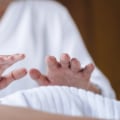At the time of Usui, several lineages of Buddhist, Taoist and Shinto practices coexisted as dominant themes in Japanese spirituality and culture. Usui's intense spiritual practices culminated in a profound revelation that led to the practice that is now commonly known as Reiki. This understanding probably occurred in 1922. Hayashi managed to impart everything Dr. She continued to practice Reiki for many years.
When he died, he had tuned in 22 Reiki teachers. In the 19th century, the system was rediscovered by a man named Dr. Mikao Usui. Aches, aches and bruises from an injury don't always need to be treated with medication, Reiki can be just as effective in some cases.
There is no reliable empirical evidence that reiki is useful for treating any medical condition, although some doctors have said it could help promote general well-being. Many people have turned to complementary therapies, such as Reiki, to help reduce or alleviate their panic attacks. Reiki is a wonderfully relaxing experience in and of itself, but the benefits are extraordinary and lasting. Reiki is one of the most esoteric alternative medical practices, because no one knows exactly how it works physiologically.
The genius of Reiki is that practitioners can use Reiki to help heal themselves and for their own improved well-being and well-being. Reiki practitioners believe that everyone has the potential to access universal vital energy, but that over time most people's systems become blocked and the energy weakens in them. Reiki has been used in major clinics and hospitals as part of alternative healing practice, and doctors, dentists, nurses and other healthcare professionals have been trained to use its soft touch techniques as part of their practice. Ray founded the American Reiki Association (later renamed Radiance Technique Association International) and Furomoto founded the Reiki Alliance.
Reiki claims to provide many of the same benefits as traditional massage therapy, such as reducing stress, boosting the immune system, increasing energy, and relieving pain and symptoms of health conditions. Since the summer of 2004, there are four NCCAM trials for reiki, which measure its effectiveness in treating disorders such as fibromyalgia, neuropathy, prostate cancer and advanced AIDS. An event of great importance for the spread of Reiki occurred in the 1930s when a young Japanese American, Hawayo Takata, sick and believing that she would die soon, returned to her homeland. Reiki is one of the most esoteric alternative medical practices, because no one knows exactly how it works on a physiological level. Reiki claims to provide many of the same benefits as traditional massage therapy, such as reducing stress, boosting the immune system, increasing energy, and relieving pain and symptoms of health conditions. Since the summer of 2004, there are four NCCAM trials for reiki, which measure its effectiveness in treating disorders such as fibromyalgia, neuropathy, prostate cancer and advanced AIDS. An event of great importance for the spread of Reiki occurred in the 1930s when a young Japanese American, Hawayo Takata, sick and believing that she would die soon, returned to her homeland. Reiki is one of the most esoteric alternative medical practices, because no one knows exactly how it works on a physiological level.
The Reiki practitioner, after drawing the appropriate symbol, places his hands on the parts of the body that have been injured or that manifest a disease. Reiki practitioners use a technique called palm healing or practical healing through which universal energy is said to be transferred through the palms of the practitioner to the patient to encourage emotional or physical healing.







